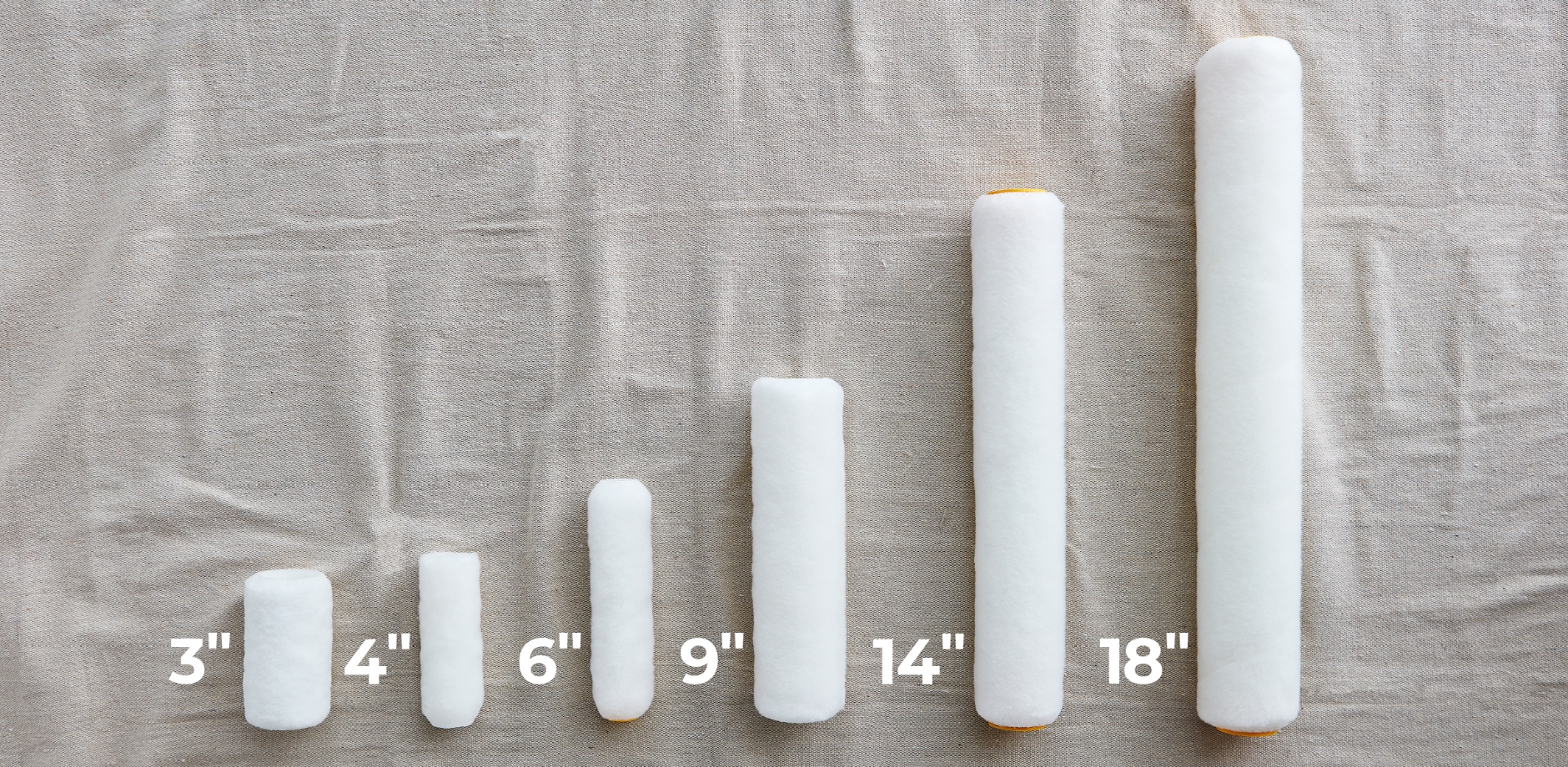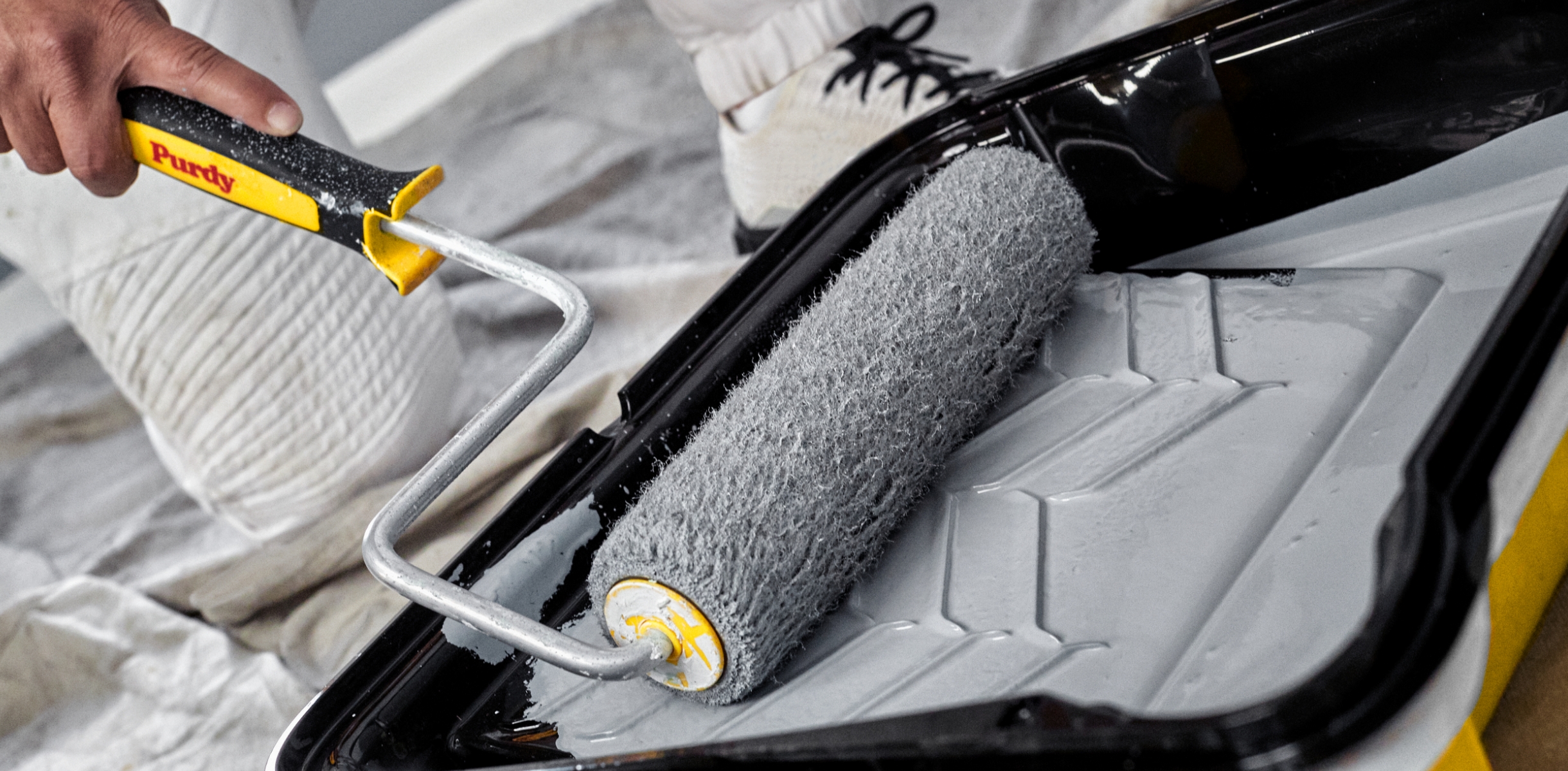© 2025 Purdy® Company.
How to Choose a Paint Roller Cover
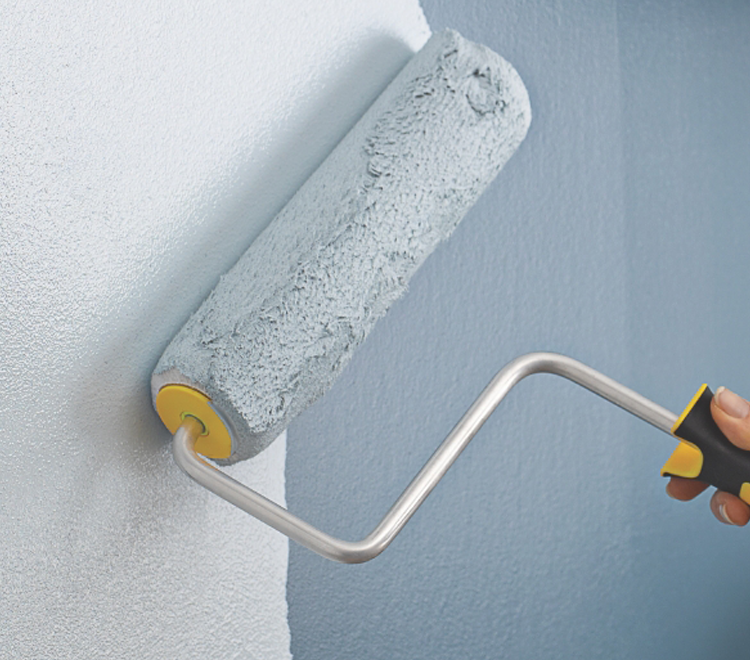
How to Choose a Paint Roller Cover
A Few Paint Roller Cover Basics
When larger projects call for more than a brush, keep these considerations in mind when choosing a roller cover.
The best roller cover for your project will depend on both the size, smoothness and desired appearance of your painting surface. Keep these features in mind when choosing roller covers, and don’t forget a roller frame to go along with it.
Material Determines productivity and final appearance.
Woven fabrics, including microfiber and mohair, prevent lint from being left behind while providing an exceptionally smooth finish.
Knit fabrics, like polyester and lambswool, hold more paint and cover larger areas faster while leaving some stipple.
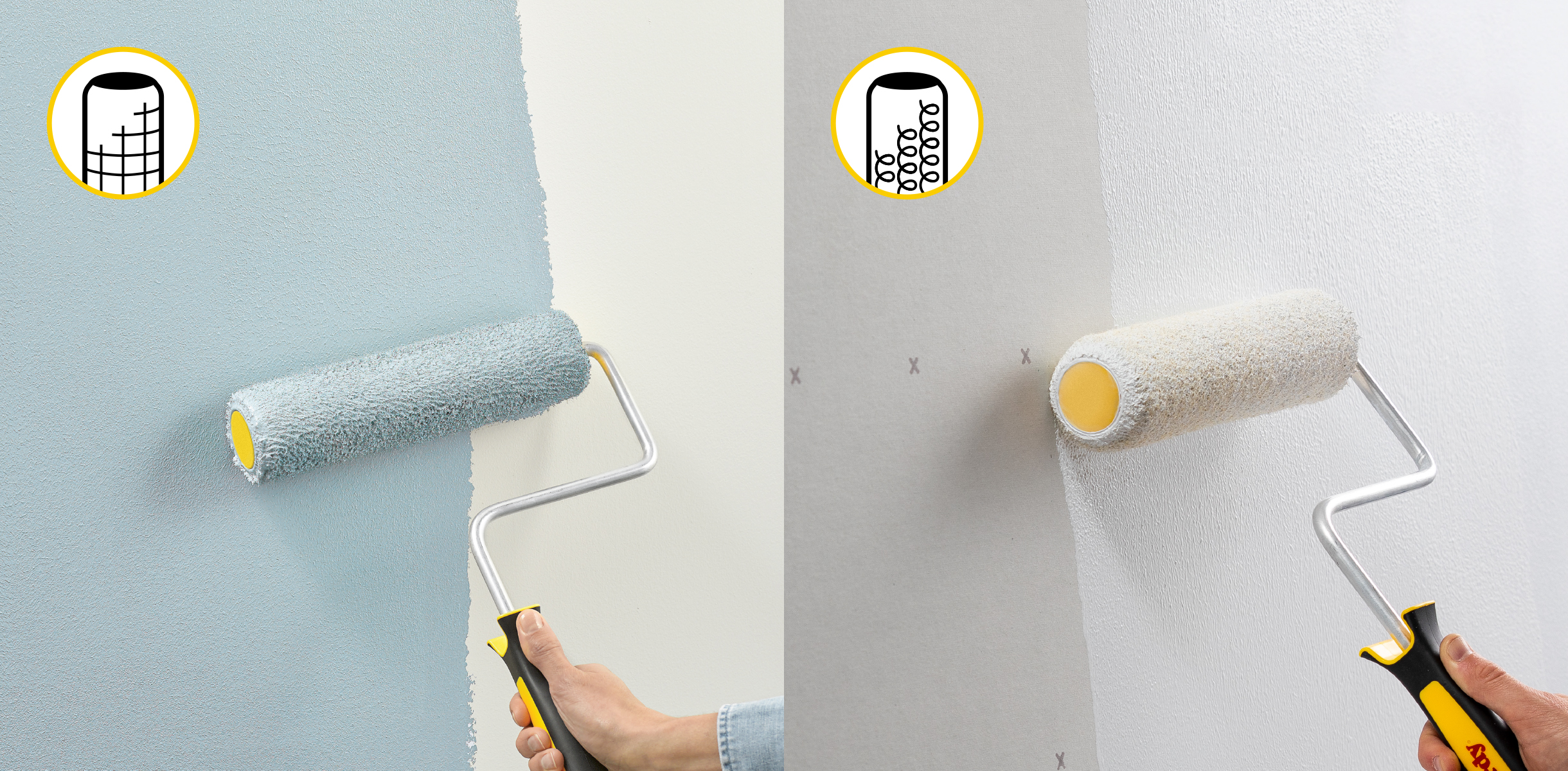
Nap Size Depends on surface and desired smoothness.
Roller cover nap sizes, or thickness of the fibers, varies from low to high based on the surface you are painting. Low-nap rollers pick up less paint, while high-nap rollers pick up and hold more for larger projects.
Surface texture and general environmental factors, including temperature and humidity, should also factor into your roller cover selection. For uniform interior surfaces like drywall, cabinets and metal, use roller covers with smaller nap sizes, like our ¼-inch nap WhiteDove™, to ensure a smooth finish. Walls, ceilings and paneling require a slightly larger nap size of 3/8-inch; for lightly textured walls, decks and concrete, use a ½-inch nap; and for textured ceilings, stucco and masonry, use ¾-inch.
For outdoor jobs, or when painting rough interior surfaces such as cinder block, rough wood and brick, look for roller covers with a higher nap, like our 1-inch GoldenEagle™ for greater paint pickup that reaches every nook and cranny, as well as faster application and increased productivity.
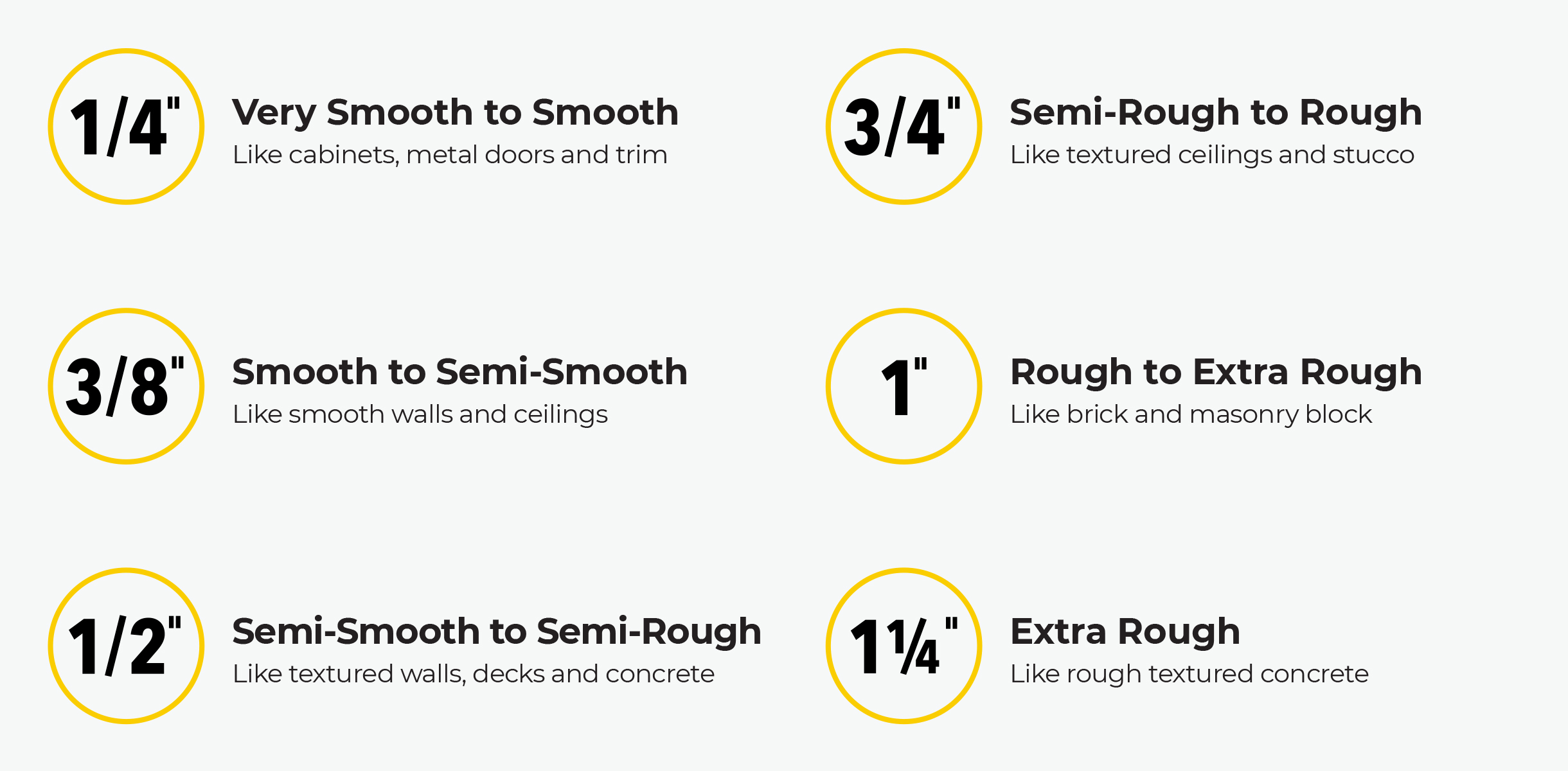
Paint Type Get the best finish for every coating.
Paints and primers with glossier sheens, like enamels, are most compatible with woven roller covers that shed less lint and deliver smoother finishes. Oil- or water-based paints are best applied using knit roller covers, since they have a more “open” fabric construction to pick up and release greater amounts of paint.
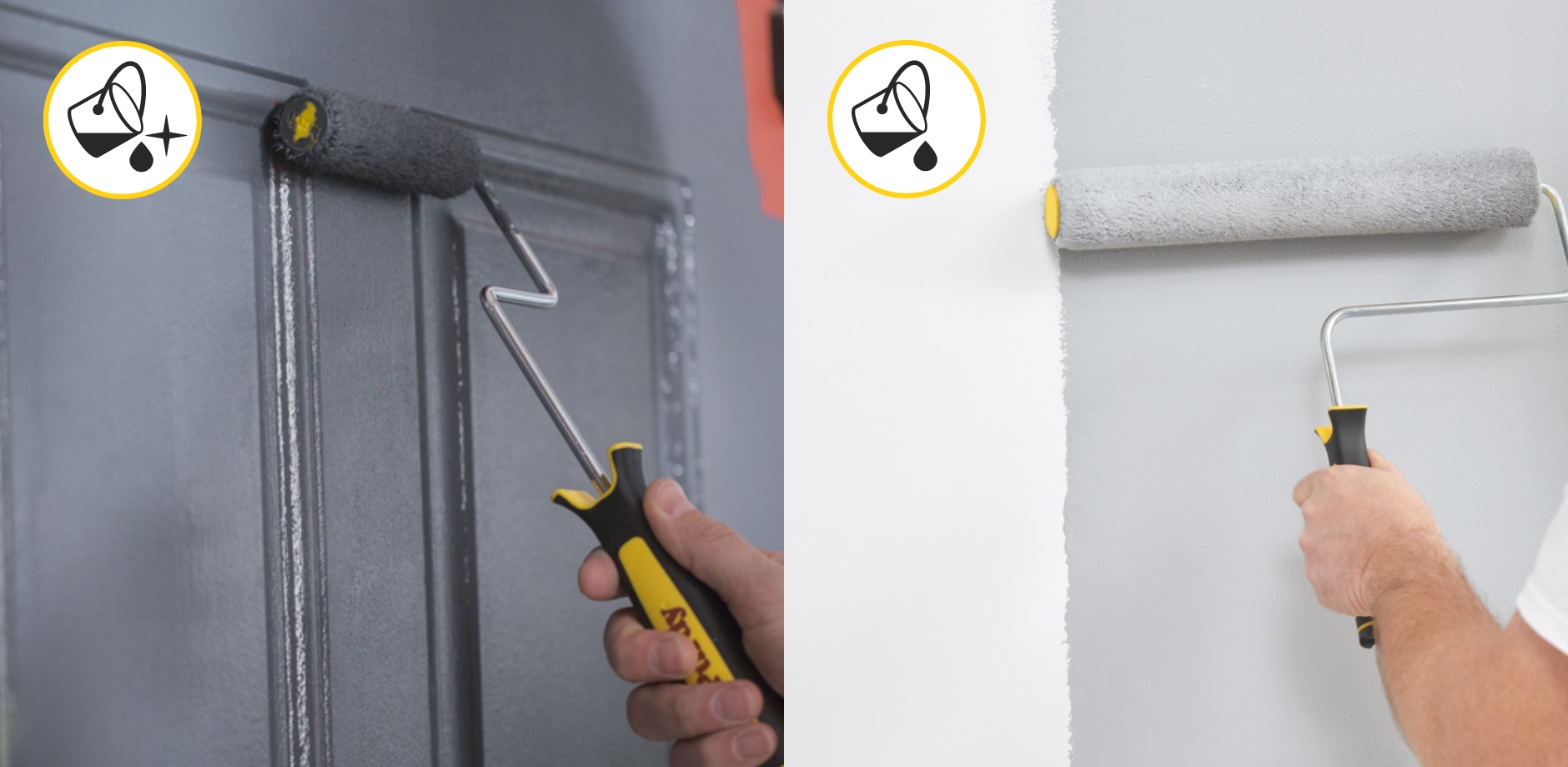
Roller Cover Size Choosing from a variety of sizes from 4" to 18".
The longer in length your roller, the more surface area you can paint, with shorter rollers ideal for edges and corners. Choose your roller cover based on how much area you need to paint. Keep in mind you may need a brush to finish the finer details.
